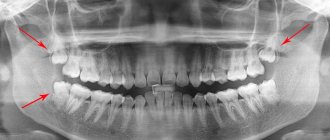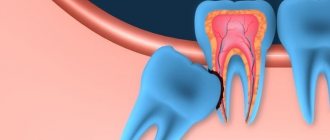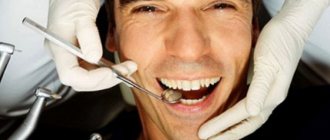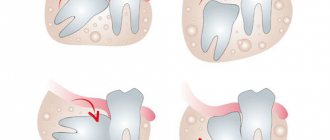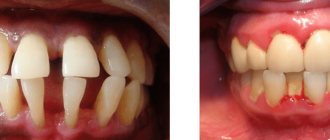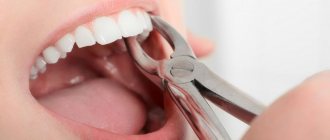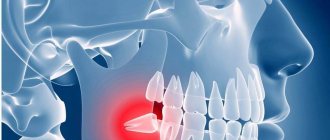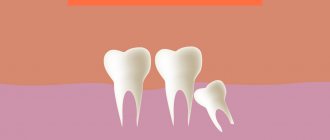Do you want to know in detail what dental caries is, how to treat it and the causes of its occurrence? This dental problem is physiological and aesthetic in nature. Damage and gradual destruction of tooth enamel can cause a person a lot of unpleasant experiences. To prevent the disease from progressing, it is necessary to treat it in a timely manner. Are you interested in the question of when to treat caries? Depending on the stage of the disease and the speed of its progression, you have a varying amount of time at your disposal. At any of its stages, it is best to seek medical help as quickly as possible in order to avoid much more serious consequences for your health.
Modern dental treatment
Dental treatment of teeth is a set of measures aimed at eliminating the inflammatory process and restoring chewing functions. The most common disease is, of course, caries and its complications. The timing of dental treatment directly depends on the stage of development of the disease. Thus, installing a dental crown or implanting several teeth will take different times, depending on the number of specialist appointments. It is worth noting that regular preventive examinations allow you to notice pathologies at an early stage, allowing for dental treatment without extraction and significantly simplifying it.
If a patient comes to the clinic with acute pain, the task becomes much more complicated. Therefore, every dentist will tell you that the best dental treatment is prevention.
Photos before and after dental treatment
Photos Before and After treatment of chewing teeth.
Photos Before and After treatment of front teeth.
How to treat caries: stages
To get rid of caries, you need to make an effort, because although modern drills do not vibrate like hammer drills, they still make us wait for the sudden appearance of acute pain - while drilling out carious tissues. Fortunately, modern anesthetics allow the dentist to properly numb the teeth during treatment - unlike the ineffective novocaine and lidocaine that were widely used previously.
Proper treatment of dental caries in dentistry consists of a number of successive stages, each of which has a clear goal. But nevertheless, the most important thing is the complete removal of caries, because... if the removal of tissue affected by caries is incomplete, it will immediately develop under the filling and will certainly lead to the development of pulpitis and the need to remove the nerve from the tooth. Watch the video below to see how hard tooth tissues affected by caries are removed.
Treatment of dental caries: video 1-2
In detail about the stages of treatment of average caries -
But before we move on to drilling out the carious tissue, which you could see in the video above, you still need to perform a number of procedures to prepare the tooth for treatment, as well as anesthetize it with an injection of a local anesthetic. For those who like stronger anesthesia, there are methods of sedation and general anesthesia.
- Cleaning a tooth from plaque (Fig.4) –
Before starting treatment, it is necessary to hygienically clean the tooth, as well as neighboring teeth, from plaque and tartar. For this purpose, ultrasonic attachments are used to remove massive dental plaque, as well as special brushes and abrasive pastes to remove soft microbial and pigmented plaque. - Determination of tooth color using a special scale (Fig.5) –
Hygienic treatment of the tooth also helps the doctor to accurately select the color of the filling material. In this case, the filling will match the color of the tooth, and will not stand out against the background of the tooth’s own tissues. This is especially important for teeth that are visible when you smile. - Anesthesia (Fig. 6) – is it painful to treat caries: for painless drilling of carious tissues if the tooth is alive, local anesthesia is necessary. Modern painkillers in dentistry, for example, ultracaine or ubistezin, make the intervention absolutely painless. Depending on the amount of anesthetic administered and the method of anesthesia, the anesthesia time can last from 40 minutes to several hours.
The only pain that the patient can feel is the moment the needle is inserted into the gum, as well as the process of removing the anesthetic into the tissue. This process can sometimes be painful, which largely depends on the patient’s level of pain sensitivity, as well as on the speed at which the anesthetic is injected into the soft gum tissue. The faster the solution is administered, the more painful the injection. - Drilling out carious tissues – As can be seen in Fig. 7, enamel is always destroyed with average caries to a lesser extent than the underlying tissue (dentin). This is due to the fact that enamel is much, much stronger and harder than dentin. Therefore, the carious cavity usually expands in depth, and the entrance hole in the enamel can even be quite small.
The dentist must drill out the edges of the enamel overhanging the carious cavity, and also remove all carious dentin. If you leave even a small amount of dentin affected by caries and put a filling on top of it, then very soon you can expect complications - the rapid development of caries under the filling and destruction of the tooth crown, with the subsequent development of pulpitis and periodontitis (24stoma.ru).
In Fig. 8, the dotted line shows the approximate boundaries of tooth tissue removal. In this way, the cavity is given a relatively correct shape and the next stages of treatment can begin. It should be noted here that recently new methods of tooth preparation have appeared, which help to do without traditional drilling. Recently, it has become possible to remove caries with a laser.
- Isolation of tooth from saliva – this is a very important stage! After the carious tissue is drilled out, and before filling the tooth, the doctor must carefully isolate the tooth from saliva and even the patient’s wet breath. These factors will greatly affect how long the filling will last. Previously, cotton balls and gauze balls were used for insulation, which were used to cover the tooth on all sides. It should be noted that this is a very unreliable and ineffective protection.
For the last 10 years, “cofferdam” has been used for these purposes. The latter is a thin latex “scarf” in which holes are made for the teeth. This scarf is pulled over the teeth (Fig. 9-10), after which 1-2 special metal clasps are installed on the necks of the teeth, which hold the rubber dam against the gums. The edges of such a latex scarf are attached to a special frame (Fig. 11), and we see the result - a group of teeth is completely isolated from the oral cavity.Installing a rubber dam is quite labor-intensive. Some doctors refuse to use it on principle to save their time. The doctor’s use of a rubber dam in the treatment of caries indicates that the doctor is very attentive to the quality of his work, because the quality of the filling will be affected not only by the accidental contact of saliva on the tooth being filled, but also simply by the moist breath of the patient himself.
- Medical treatment of a carious cavity - a cavity formed in the tooth during the removal of carious tissues - is treated with antiseptics.
- Restoring the contact point between teeth – If caries is treated on the contact (interdental) surface of the tooth, then it is also necessary to restore the side wall of the tooth.
This is a rather labor-intensive and complex task than simply treating average caries, for example, on the chewing surface of a tooth. In this case, another stage is added - the installation of special devices to restore the side wall of the tooth. Such devices include wedges (a) and matrix (b) in Fig. 12. Read more about the treatment of interdental caries in the article: → “Treatment of caries between teeth” - Etching the enamel with acid (Fig. 13) is necessary so that the adhesive (something like glue), which will be applied to the surface of dentin and enamel at the next stage, can penetrate deeply into the tooth tissue. For this purpose, a gel based on phosphoric acid is used. After etching, all the gel should be thoroughly washed off, and the tooth surface should be slightly dried.
- Treatment of dentin and enamel with adhesive - for better fixation of a permanent photopolymer filling, enamel and dentin are treated with a special adhesive, which (after absorption) is illuminated with a photopolymerization lamp.
- Applying a gasket under the filling (Fig. 14 b,c) - an insulating gasket, usually made of glass ionomer cement, is applied to the bottom of the cavity. The need for lining material under the filling is explained by the complex mechanisms of polymerization shrinkage of the filling material and other factors (we will not dwell on them).
- Filling – dental filling is necessary to restore the shape of the tooth, its aesthetics, as well as to restore chewing efficiency. For this purpose, photopolymer composite materials are usually used. They are applied in layers and each layer is illuminated with a special lamp, which allows the material to harden.
- Grinding and polishing of the tooth - after the shape of the tooth has been restored using filling material, it is necessary to grind and polish the filling, because it is rough and uneven. Final polishing gives the filling a shine and aesthetics comparable to that of tooth enamel. This completes the treatment of average caries.
→ Cost of treatment of dental caries
Filling a carious defect: video 3-4
Please note that dentists use special metal strips (matrices) and wedges to restore the side walls of teeth. In addition, tooth filling in both cases is carried out using a rubber dam.
Endodontic dental treatment
What is endodontic dental treatment? This is a procedure aimed at treating root canals, usually using a microscope. If you ignore the symptoms of caries for a long time, pulpitis, periodontitis and other complications develop. Endodontic treatment of teeth under a microscope will help eliminate acute pain and relieve inflammation. The help of an endodontist is indispensable when there is a suspicion of a dental cyst or granuloma. Often, after canal treatment, complications arise due to poor quality treatment or stuck pieces of broken instruments. In such difficult cases, they also resort to endodontic treatment of the tooth canal under a microscope.
Causes of tooth mobility
The roots of the teeth are located in the sockets (alveoli), they are firmly connected by the periodontium - a layer of connective tissue, collagen fibers, nerves and blood vessels. It is the periodontium that provides the necessary shock absorption of the dentition, allowing units to move in different planes, dampening chewing pressure. Periodontium is part of the periodontal tissues, such as gums, ligaments, cement, and bone surrounding the roots. If the connections between the alveolus, periodontium and tooth root are disrupted, the dental units begin to move beyond normal limits. The reasons for these changes are:
- inflammation and destructive changes in the periodontium (periodontitis, periodontal disease, periodontitis);
- dental diseases (flux, cyst, etc.);
- chronic systemic diseases (osteoporosis, diabetes mellitus, thyroid dysfunction and other diseases accompanied by metabolic, circulatory, and tissue regeneration disorders);
- malocclusion, uneven pressure on one tooth or group of elements (occlusal trauma);
- bruxism;
- jaw injury (bruise, fracture);
- prosthetics errors (incorrectly installed prostheses, implants);
- damage from solid food;
- large interdental spaces (teeth begin to shift towards the empty space);
- age-related changes (puberty, menopause, pregnancy and lactation, old age);
- bad habits;
- long-term use of certain medications.
Natural mobility associated with age occurs exclusively in children, when baby teeth are replaced by permanent teeth. If a molar tooth in an adult is loose, we are talking about pathology. The cause may be improper redistribution of chewing loads, disease, and not necessarily dental disease. Increased mobility may occur during orthodontic treatment. To eliminate it and stabilize the correction result, after removing braces or aligners, retention devices (retainers) are used.
Treatment without drilling
Dental treatment without drilling involves the use of minimally invasive procedures. Some of them have been mentioned above. In particular, lasers are actively used to eliminate caries. This type of dental treatment is performed for adults and children. Among the main advantages is a reduced risk of any infection, since contact of equipment with organs and tissues of the oral cavity is eliminated.
Also, dental treatment without a drill can be performed using the chemical-mechanical method. A special preparation is applied to the area of the tooth affected by caries. It contains sodium hypochlorite and amino acids. Next, the specialist treats the affected area using special tools. Since only dead tissue is removed, the filling occupies a much smaller area, and it is also possible to preserve healthy areas as much as possible.
Another interesting technique was developed by German specialists. It is based on the bactericidal properties of ozone and is often used in pediatric dentistry. The gas used to treat teeth completely destroys microorganisms that cause caries.
The latest non-invasive methods
Before dental treatment, a specialist determines the degree of destruction of enamel, hard tooth tissue and dentin. In advanced cases, a granuloma forms around the root, which may subsequently increase in size. Modern methods of dental treatment make it possible to successfully combat the first signs of caries without the use of a drill. Among them:
- laser dental treatment;
- application of chemical-mechanical techniques;
- fluoridation – treatment of teeth with calcium;
- application of the air-kinetic method;
- ozone therapy.
Treatment of a tooth under a crown
After some time has passed after the installation of the prosthesis, subsidence of the gums and exposure of the neck of the tooth are often observed. All this contributes to the development of caries, and therefore pulpitis, periodontitis and other unpleasant diseases can appear even when the tooth is covered with a crown. Only a specialist can identify the problem and treat the tooth under the crown. If a disease is detected, the structure may need to be removed.
It is also the cause of problems - errors in the manufacture of the prosthesis: if the crown does not fit tightly around the neck of the tooth, bacteria can get under it. The specialist immediately removes such structures and carries out dental treatment. The crowns will subsequently be replaced, which will preserve the teeth and prevent the development of more serious diseases.
Anesthesia
Conventional local anesthesia is performed very often today. Patients with increased sensitivity of soft tissues and children can first be given topical anesthesia. Also in dentistry, painkillers are used for dental treatment. The type of drug and its dosage are selected individually - it all depends on both the patient’s health condition and the clinical situation. For example, pediatric dentists often treat teeth with nitrogen. Laughing gas causes a feeling of mild euphoria and is not hazardous to health. The patient relaxes, and the doctor can calmly perform all the necessary manipulations. But general anesthesia in dentistry is used only in the most extreme cases.
Anesthesia after dental treatment can last up to 3 – 4 hours. Everything here is very individual and depends on how much anesthetic was used.
Features of the structure of newly erupted permanent teeth in children.
As we have already said, newly erupted permanent teeth in a child have a number of anatomical features and differ from the teeth of an adult, namely:
- They have fragile, not fully formed and mineralized enamel.
- They have unformed roots that connect to the growth zone.
- The root canals of such teeth are wide, with a funnel-shaped expansion towards the root apex.
- The thin and fragile walls of the dental canals do not have secondary dentin; they are easily injured and destroyed.
- There is insufficient mineralization of dentin in the roots of the tooth.
Therefore, when treating pulpitis of permanent teeth in children, there are a number of limitations and features that the pediatric dentist knows and must follow. Endodontic treatment (root canal treatment) of permanent teeth in children is complex and requires great care.
By the way, for this reason, it is better for adolescent patients to contact a pediatric specialist rather than an adult dentist-therapist.
Features of treatment of anterior teeth
Treatment of anterior teeth is associated with some difficulties. A characteristic feature of the incisors is their smaller size compared to other teeth. The work that a dentist has to do is truly jewelry. Only an experienced specialist can achieve a high degree of aesthetics.
In the process of treating and restoring the shape of a diseased tooth, a filling can be performed using light-curing polymer materials or veneers. Their shade is selected taking into account the color of the enamel of the patient’s healthy teeth.
The last resort is the installation of crowns. This method is justified only if the tooth is severely damaged. Treatment of lower teeth in the frontal zone is performed using similar methods and techniques.
Reason to see a doctor: symptoms that cannot be ignored
If a tooth hurts, treatment should never be delayed. Any delay is fraught with serious problems not only for the oral cavity, but also for the whole body. The sooner the source of infection is identified, the easier and faster dental treatment can be performed in the clinic. Symptoms that indicate serious problems:
- acute throbbing pain in the tooth;
- significant increase in sensitivity;
- bad breath during regular hygiene;
- bleeding and swelling of the gums;
- tooth mobility;
- difficulty opening the mouth;
- the appearance of a defect on a tooth, an area with uneven edges and pigmentation.
How is the progression of pulpitis in permanent teeth different in children?
Pulpitis is a serious disease, it must be treated, otherwise you can actually lose a tooth, get gumboil and even blood poisoning.
As in other age groups, pulpitis in adolescents under 14 years of age occurs in 2 main forms:
- Acute, with severe pain at night and in the evening, a painful reaction to temperature and chemical stimuli, an increase in temperature in case of general intoxication and the development of purulent complications.
In the absence of timely adequate treatment, the acute form becomes chronic.
- Chronic. This form of pulpitis can pass painlessly with the appearance of periodic pain reactions to cold, hot, sour, sweet. The acute inflammatory process in the pulp subsides, and the sluggish course of the disease contributes to the development of complications from periodontal tissues. Exacerbations occur periodically.
Attention parents! During adolescence, children may hide the disease and take painkillers uncontrollably.
Stages of dental treatment
Despite the fact that modern methods involve virtually painless dental treatment, fillings and other procedures, many patients appear in the doctor’s office with acute pain and a whole “bouquet” of oral diseases. Treatment usually includes the following steps:
Diagnostics
A specialist examines the oral cavity, identifies problems and draws up a treatment plan. Additional examinations may be ordered. At the same stage, the doctor conducting the consultation discusses the cost of services with the patient and selects the most convenient time for an appointment.
Professional oral hygiene
It is advisable to begin dental treatment only after their surface is cleaned of hard and soft deposits.
Treatment
The process of treating caries involves removing the affected tissue. The procedure is performed using local anesthesia, and the treated area is isolated from the rest of the mouth. Rubber dam or cotton swabs can be used for these purposes.
Seals
Filling is carried out after cleaning the carious cavity. The final procedure is grinding the filling - this is necessary to eliminate the occurrence of discomfort during the process of chewing food.
Folk remedies in the fight against dental disease
Want to know how to cure tooth decay at home without a dentist? To help yourself maintain the health and integrity of the dental structure, you should remember how and how caries is treated. You can influence the condition of your teeth and overall well-being by adjusting your diet and taking more careful oral care. By reducing the consumption of sweets and soda, unhealthy foods and fast food, while adding fresh vegetables and fruits to the menu, you can prevent the occurrence and development of the disease.
Various folk remedies used in oral care will help improve the general condition of teeth and strengthen their structure. You can use decoctions of sage, calamus and other herbs for rinsing. In addition, you should rinse your mouth and try to brush your teeth after every meal. In daily hygiene care it is necessary to use special dental floss. It will help remove food debris from the interdental spaces, stopping the proliferation of pathogenic bacteria. You can do all of these preventive procedures at home yourself.
Why does a tooth hurt after treatment and what to do in this case?
Aching pain after treatment occurs quite often. However, its causes may be different, which means that the doctor’s actions to eliminate it are required different. Let's look at the most popular:
- Very often, after treatment, the tooth reacts to mechanical stress when chewing food. As a rule, minor pain appears after treatment of deep caries. This is due to the fact that the filling puts pressure on the pulp. Over time, the pain will pass.
- It is not uncommon for a tooth to ache after treatment and due to an individual reaction to the doctor’s intervention. The pain may persist for several days.
- Acute pain after dental treatment cannot be ignored. You must immediately contact a specialist. Unpleasant pain may indicate that there is inflammation after dental treatment.
- If you are sensitive to irritants such as hot and cold drinks, sweet or sour foods, then there is a high probability that the overhanging edge of the filling will injure the periodontal tissue in the gum area. This phenomenon leads to tissue inflammation and exposure of the tooth root, which is extremely sensitive to any irritants. Therefore, be sure to contact the dental clinic if your tooth aches after recent manipulations. The treatment was most likely carried out poorly.
Pros and cons of removal tactics for caries of the lower or upper eights
Advantages of the extraction (removal) method:
- it is possible to completely eliminate the infectious focus, prevent the spread of the inflammatory process to adjacent teeth and nearby tissues;
- eliminates the risk of crowded teeth and the need for orthodontic correction;
- the risk of recurrent caries is eliminated;
- removal of the third molar allows you to radically solve the issue of pain in the area of this tooth.
The negative aspects of removing wisdom teeth include the risk of postoperative complications, as well as the inability to install a support for bridges or crowns on the figure eights, if necessary.
How much does dental treatment cost in Moscow?
Taking into account the fact that therapy involves an integrated approach, the total cost of dental services will consist of the costs of individual procedures. Approximate prices for dental treatment in Moscow are presented in the table below.
| Type of service | Price |
| Specialist consultation | from 500 rubles, but most often it is free |
| Professional hygiene of the entire oral cavity | from 3,000 rubles |
| Treatment of pulpitis (depending on the number of channels) | from 4,000 rubles |
| Filling using light-curing polymer material | from 3,000 rubles |
| Aesthetic restoration of anterior teeth | from 5,000 rubles |
